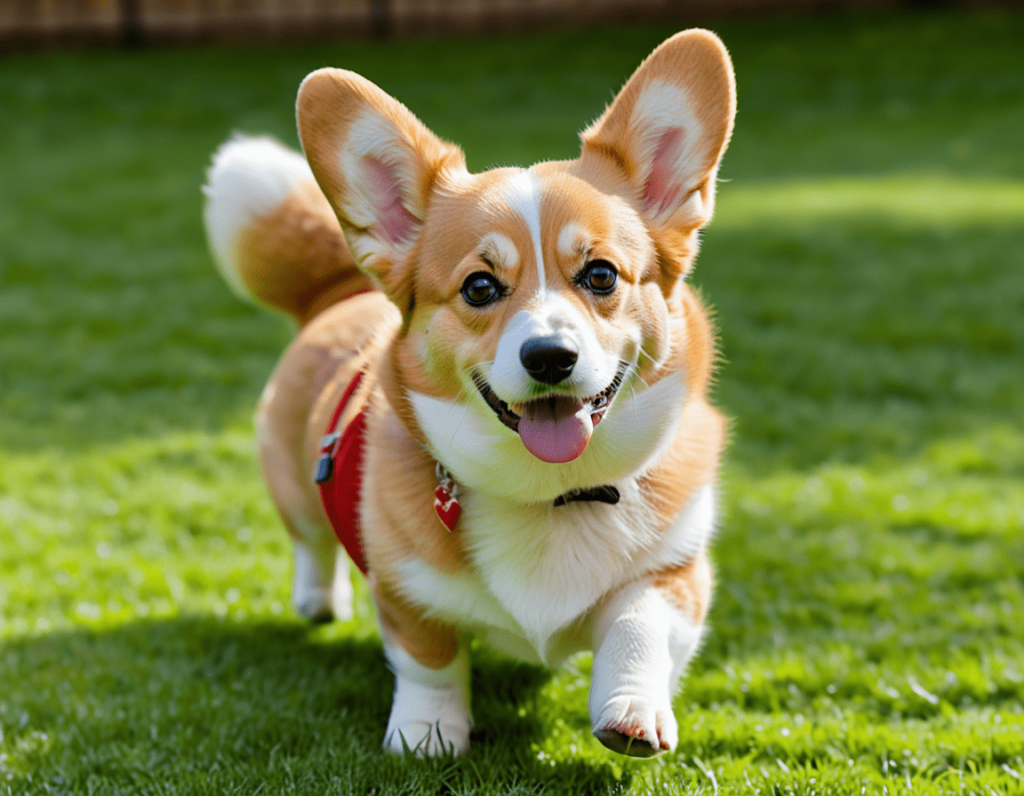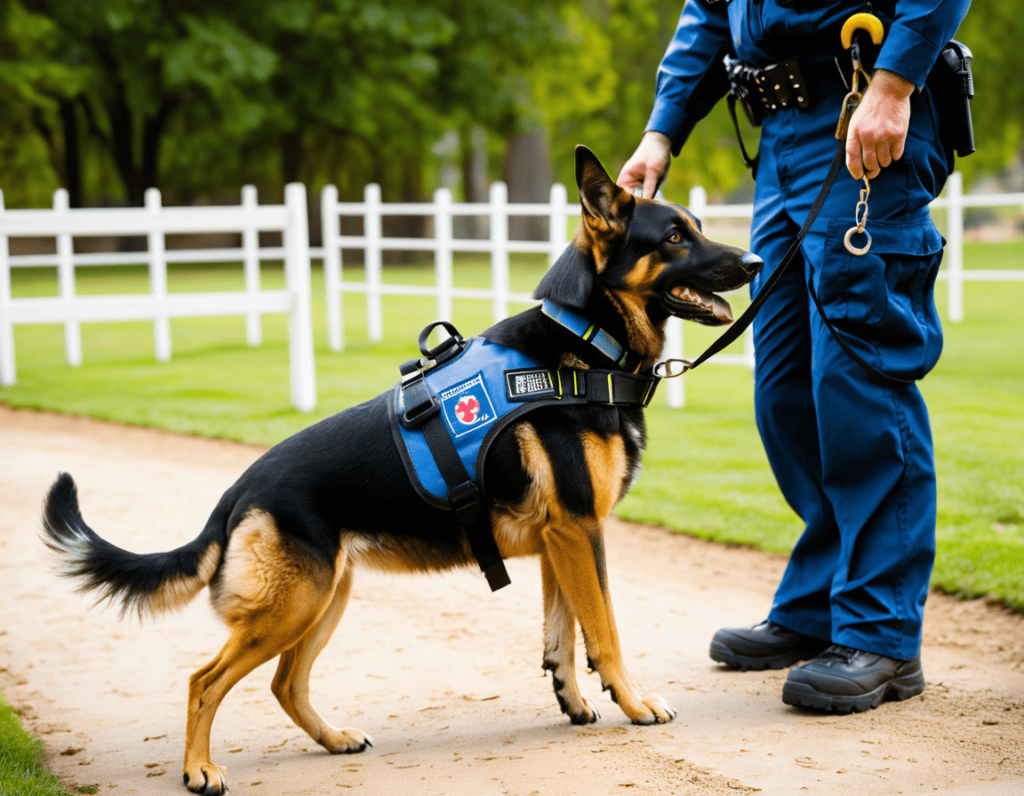
When it comes to dogs, we know they bring loyalty, laughter, and occasionally some chewed-up slippers into our lives. But beyond being adorable companions, dogs have some real “jobs” too! Some dogs work in fields or help with search and rescue, while others are highly trained to assist people with disabilities. These special dogs fall into two main categories: working dogs and service dogs. You might think they’re all “dogs with jobs,” but the differences are as distinct as a Chihuahua and a Great Dane!
So, let’s dive into the world of working dogs and service dogs. Here’s what sets them apart – in a nutshell (or should I say, a treat jar?).
1. What Are Working Dogs?
Working dogs are the overachievers in the dog world. They’re often trained to perform specific tasks that can range from herding sheep to detecting explosives (no big deal). Many working dogs come from breeds with natural instincts to perform certain jobs, like herding, hunting, or protecting. So, if you ever see a German Shepherd or a Belgian Malinois in a fancy vest, there’s a good chance they’re not just dressed up for Halloween. These dogs are here to work!
Examples of Working Dog Jobs:
- Search and Rescue: Think of these pups as the ultimate detectives! Search and rescue dogs help locate missing people in areas where humans struggle, such as dense forests or collapsed buildings. They’re the real “paw-lice” force!
- Detection Dogs: From sniffing out bombs to detecting specific diseases, these dogs have a nose for danger (and sometimes illegal substances).
- Herding: Ever see a Border Collie in action on a farm? It’s like watching a furry choreographer direct a dance, except the dancers are sheep!
Funny enough, these working dogs often seem to have a better work ethic than some people. You won’t catch them scrolling on their phones during work hours!
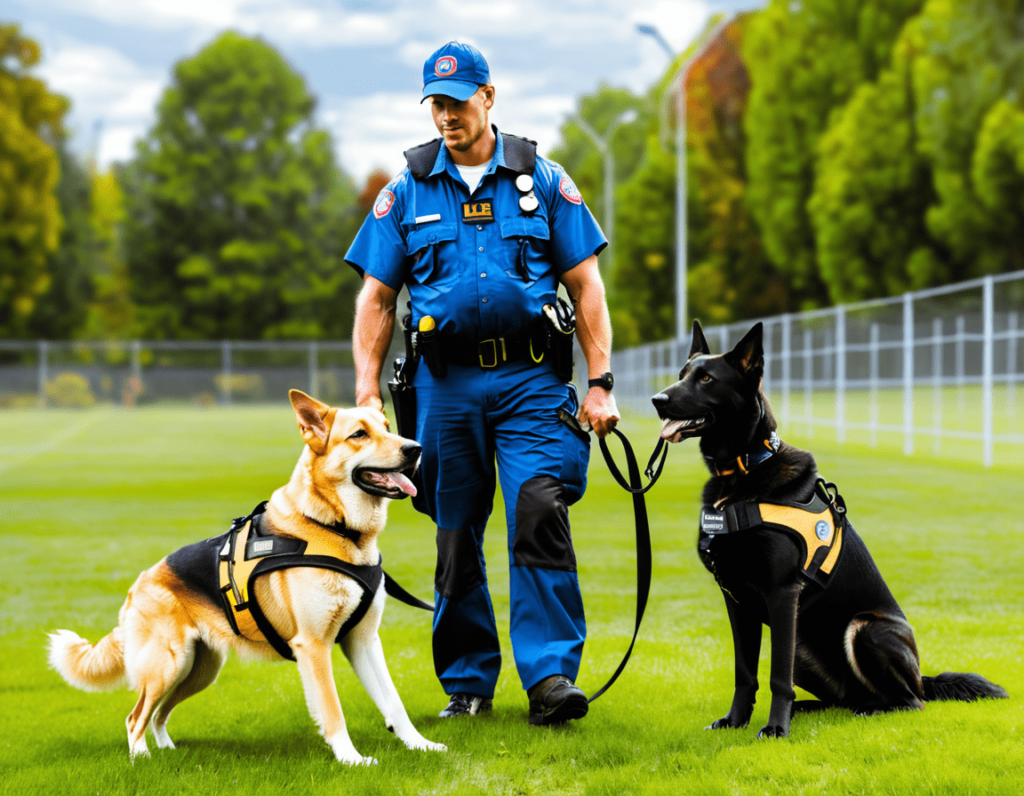
2. What Are Service Dogs?
Service dogs are a special type of working dog trained to assist people with disabilities. These dogs aren’t just skilled; they’re certified pros! Service dogs help with everything from guiding people who are blind to alerting individuals with epilepsy before a seizure hits. Their job is to help people live more independent lives, and they take it very seriously – no “barking around” for them!
Types of Service Dogs:
- Guide Dogs: These helpful hounds are trained to assist people who are visually impaired, guiding them around obstacles and ensuring their safety. Think of them as furry GPS systems!
- Hearing Dogs: For people with hearing impairments, hearing dogs alert them to important sounds like doorbells or smoke alarms. They’re like an alarm clock, only way cuter.
- Medical Alert Dogs: Some service dogs can detect changes in a person’s body chemistry, alerting them to a health issue. Diabetic alert dogs, for example, can smell when a person’s blood sugar is too low. They literally “nose” when something’s wrong!
3. Training Differences
When it comes to training, both working dogs and service dogs go through rigorous training programs, but the focus is a little different.
Working dogs are trained for jobs that are often high-stakes and involve a lot of independence. Their training focuses on obedience, following commands, and dealing with complex environments. They might not need to be people-friendly all the time – they’re just there to get the job done!
On the other hand, service dogs undergo specialized training that’s geared toward helping humans. They must be calm, collected, and people-oriented. After all, their main role is to provide assistance and comfort to their handlers, so they need a temperament that’s as steady as a golden retriever’s tail wag.
4. Can Any Dog Be a Service Dog or Working Dog?
Not every dog is cut out to be a working or service dog – no offense to your couch-loving Chihuahua! Certain breeds, like German Shepherds, Labrador Retrievers, and Golden Retrievers, have a natural affinity for working roles due to their intelligence, loyalty, and trainability. These dogs love having a job to do and seem to thrive in structured environments.
However, some smaller breeds or laid-back pups are better suited for lives as family companions than action-packed careers. Let’s just say, if your dog is more interested in snoozing than sniffing, it’s probably best to let them stick to home security…from the couch.
5. Legal Protection: Who Gets the V.I.D. Treatment? (Very Important Dog)
Service dogs are protected by laws that allow them to accompany their handlers into public spaces, like restaurants, airports, and even classrooms. You might have seen these dogs wearing “Service Dog” vests – this badge is like their work ID, proving they’re allowed to be in places regular dogs can’t go.
Working dogs, however, don’t get the same privileges. Since they aren’t assisting a specific person with a disability, they don’t get special access to public places. So, while a police K-9 can accompany an officer on duty, they can’t walk into a restaurant for a snack break. (Not that they need one – they’re professionals, after all!)
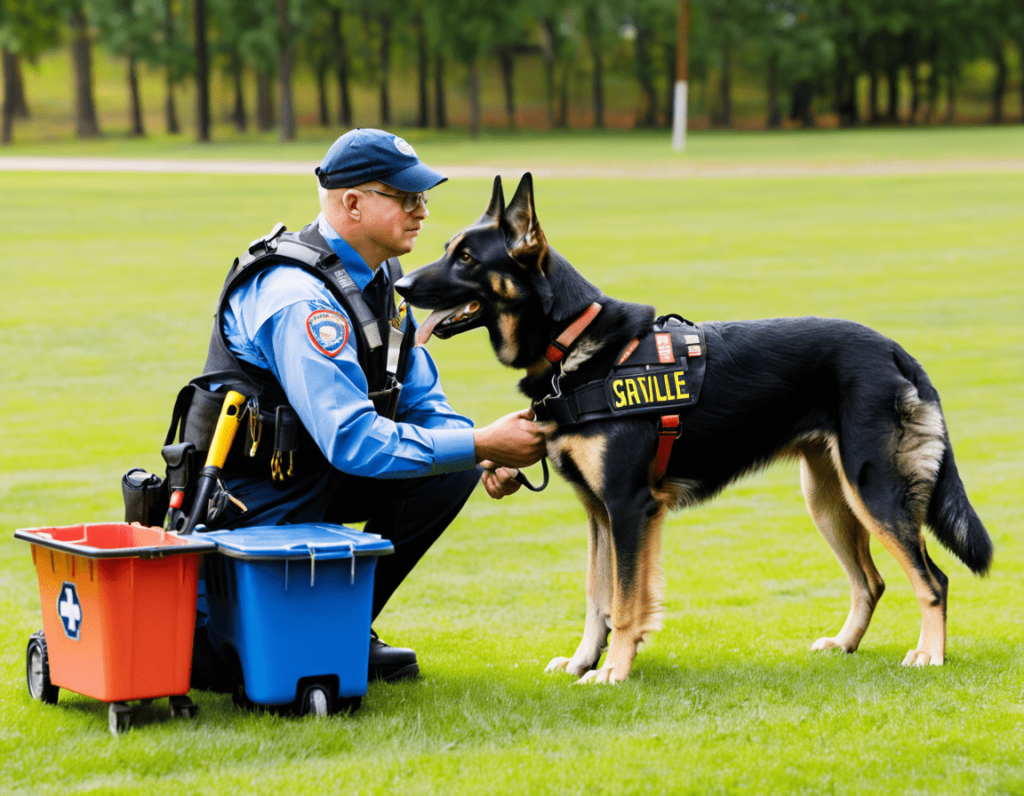
Conclusion: Working Dogs vs. Service Dogs: They’re Both Paw-some
In the end, both working dogs and service dogs deserve all the treats and belly rubs. Working dogs are out there keeping us safe, guiding livestock, and even sniffing out dangerous substances, while service dogs make life easier for individuals with disabilities by providing invaluable support.
The next time you see a dog in a vest, remember that they’re not just a “good boy” – they’re also a hard-working dog with a purpose! So give them a little nod of respect (but no petting, please – they’re on the clock!). Whether it’s herding sheep or helping someone cross the street, these dogs prove every day that they’re more than just a furry face.
After all, who wouldn’t want a job that includes belly rubs as a benefit?
Bonus Fun Fact: What About Emotional Support Animals (ESAs)?
You may have heard of emotional support animals (ESAs), which are different from both working dogs and service dogs. ESAs provide comfort to people who need emotional support, but they aren’t required to go through specialized training. While they can be immensely helpful to their handlers, they don’t have the same legal protections as service dogs. You could think of ESAs as professional cuddlers who are “licensed” to offer all the snuggles!
It’s also worth noting that ESAs are not the same as therapy dogs, who visit hospitals or schools to bring joy to others. Therapy dogs undergo a bit of training to ensure they’re well-behaved and friendly, but they aren’t trained for specific disabilities or individual assistance like service dogs.
Differences Between Working Dogs and Service Dogs – FAQs
1. What is the main difference between a working dog and a service dog?
Answer: Working dogs perform specific tasks like herding, search and rescue, or detection work. They typically work in fields such as law enforcement or agriculture and may not interact closely with people outside of work. Service dogs, however, are trained to assist individuals with disabilities in daily life tasks, such as guiding someone who is blind or alerting someone before a seizure.
2. Can any dog be a service dog or working dog?
Answer: Not quite! While technically any breed could be a service or working dog, certain breeds are more suited to these roles. Breeds like Labrador Retrievers, German Shepherds, and Golden Retrievers are popular choices because of their intelligence, trainability, and calm temperament.
3. Do service dogs and working dogs get the same legal protections?
Answer: No, they don’t. Service dogs are protected by laws that allow them access to most public spaces, such as restaurants, stores, and airplanes, to support their handlers. Working dogs, however, do not have the same public access rights since they aren’t assigned to a specific person with a disability.
4. How are service dogs trained differently from working dogs?
Answer: Service dogs are trained with a focus on assisting their handler’s specific needs and are usually trained to be people-friendly and calm in public spaces. Working dogs, on the other hand, are trained to perform specific tasks with greater independence, like tracking scents or herding livestock.
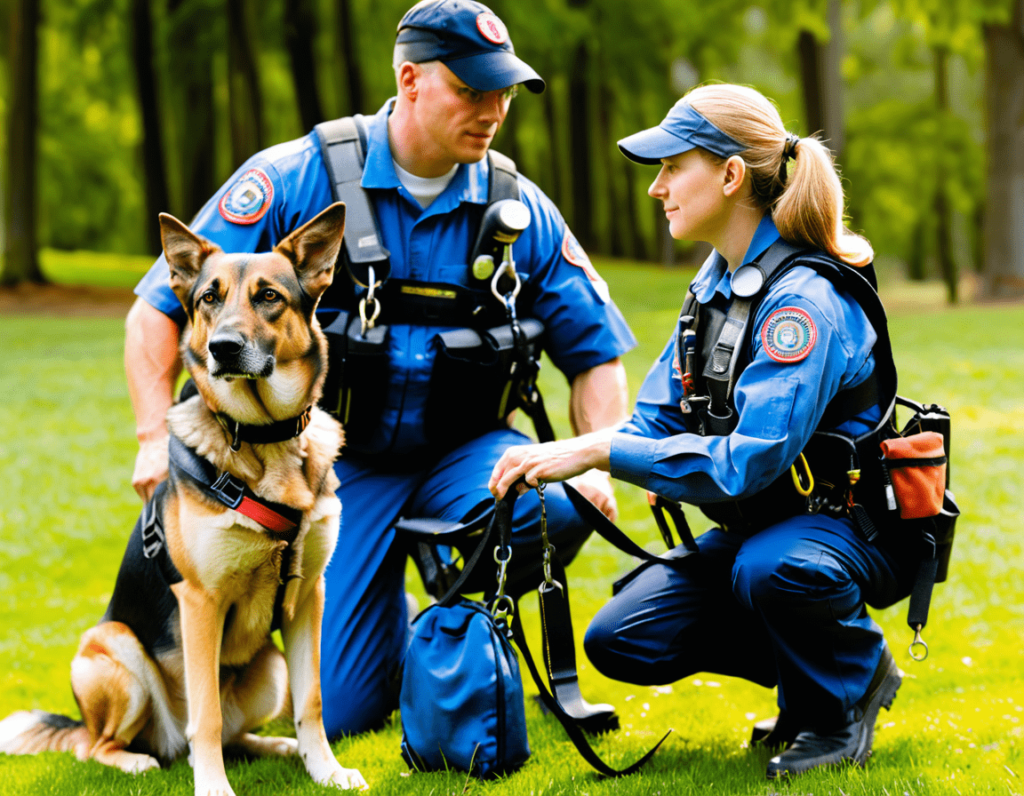
5. Are therapy dogs the same as service dogs?
Answer: Nope! Therapy dogs are trained to bring comfort and affection to people in settings like hospitals, nursing homes, or schools, but they don’t perform specific tasks for a handler with disabilities. Unlike service dogs, therapy dogs do not have the same legal rights and don’t require the same level of specialized training.
6. Can emotional support animals (ESAs) be considered service dogs?
Answer: Emotional support animals provide comfort to people with emotional or mental health challenges, but they don’t perform specific tasks for a disability like service dogs do. They don’t have the same public access rights, and unlike service dogs, they aren’t required to have specialized training.
7. Why do some working dogs wear vests or badges?
Answer: Some working dogs, such as police or search and rescue dogs, wear vests or badges to identify them as “on-duty.” This helps people recognize that they’re working and shouldn’t be disturbed. Service dogs also often wear vests to signal that they’re assisting someone and are not to be petted or distracted.
8. Can you pet a working dog or service dog while they’re working?
Answer: It’s generally best not to pet any dog “on duty.” Both working and service dogs need to stay focused on their jobs, and petting can distract them. Always ask the handler if it’s okay to pet the dog, and respect their response. Remember, these pups are doing serious work – even if they look adorable while doing it!
9. What are some common breeds used as working dogs and service dogs?
Answer: For service dogs, common breeds include Labrador Retrievers, Golden Retrievers, and Standard Poodles because of their friendly demeanor and adaptability. Working dogs often include German Shepherds, Border Collies, and Belgian Malinois, known for their strength, intelligence, and high energy.
10. How long does it take to train a working dog vs. a service dog?
Answer: Both types of dogs undergo extensive training, usually lasting several months to over a year. Service dogs typically need more specialized, individualized training depending on the person’s needs. Working dogs may focus more on task-based skills but require socialization and specific training for their field of work, which can also take significant time.
11. Are service dogs and working dogs insured?
Answer: Yes, many organizations insure service and working dogs, especially when they are part of an organization (like police K-9 units). Service dogs often come with health insurance coverage to protect them since they are vital to their handler’s daily life and well-being.
12. What’s the most surprising skill a service or working dog can have?
Answer: Believe it or not, some dogs can detect changes in blood sugar, alerting diabetic individuals to a hypoglycemic episode before it happens. Others can be trained to sniff out diseases like cancer or detect dangerous allergens – proving that dogs can truly be “scent-sational” when it comes to their skills!

